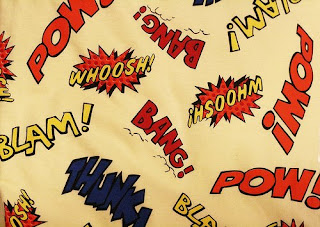 Warhol’s persona is almost as iconic as his images have become. Here are some New York art dealers fascinating stories and first impressions of Andy Warhol from The Art Dealers:
Warhol’s persona is almost as iconic as his images have become. Here are some New York art dealers fascinating stories and first impressions of Andy Warhol from The Art Dealers:
“The boy is a very important artist, Andy, because he helped America. He mixes very much with youth, and with all the chic people—you know, the bums. When you have such a stupid expression as Andy has—when he is being silent, before the smile starts—when you look like that, you can do anything you want in the world. As Christ said to all those priests, “Suffer the little children to come unto me,” and Warhol is a horrible child.” -Alexander Iolas
“I saw the first Andy Warhol show, the Brillo boxes, at Stable Gallery. I went to the opening with James Harvey, a painter supporting himself as a freelance package designer. It was he who had designed the actual Brillo box, and strangely enough, he was a friend of Andy’s. Jim nearly collapsed when we went in and saw people actually buying Warhol’s identical versions. All Jim could do was write it off as part of the madness of life.” -Joan Washburn

“Warhol very badly wanted to join my gallery, to be with artists he admired, like Johns. I turned him down at first because I felt his work was too similar to Lichtenstein’s. Warhol told me I was very much mistaken. Was there another gallery interested? Yes, I was told. If I didn’t take him, Andy said, then he had no choice but to go to Eleanor Ward’s Stable Gallery. And he did. His show there a year later was fantastic: the Brillo boxes, the Marylins, and the Elvis paintings. I realized I had made a big mistake.” -Leo Castelli
 “A few weeks later a very strange man with a terrible complexion and mottled gray hair came in, looking for drawings by Jasper Johns. Although I told him they were very expensive, $400 or $500, he asked for the drawing of a light bulb. I showed him the Lichtenstein girl with the beach ball, and he said his own work was very similar. He then asked me to visit his studio. I was intrigued by him and went to his place on Eighty-Ninth Street, where I saw beautiful antique furnishings alongside twenty-five paintings of Campbell’s soup cans and cartoon characters. He was playing rock-n-roll music so loudly we couldn’t really have a conversation.” -Ivan Karp
“A few weeks later a very strange man with a terrible complexion and mottled gray hair came in, looking for drawings by Jasper Johns. Although I told him they were very expensive, $400 or $500, he asked for the drawing of a light bulb. I showed him the Lichtenstein girl with the beach ball, and he said his own work was very similar. He then asked me to visit his studio. I was intrigued by him and went to his place on Eighty-Ninth Street, where I saw beautiful antique furnishings alongside twenty-five paintings of Campbell’s soup cans and cartoon characters. He was playing rock-n-roll music so loudly we couldn’t really have a conversation.” -Ivan Karp
 “Also at that time I had my first encounter with Andy Warhol. He was about halfway into his soup-can series when I visited his studio. I spent quite a bit of time chatting with him while looking hard at those paintings. I decided virtually on the spot to show them in California, and Andy was thrilled with the idea. He had no representation at the time; he sold one or two thins with Martha Jackson and Allan Stone, but he had no New York gallery. We struck a bargain then and there, and the paintings arrived in California in July 1962. I showed them by encircling the gallery with the thirty-two soup cans, all of them the same size, 20 inches high and 16 inches across.” -Irving Blum
“Also at that time I had my first encounter with Andy Warhol. He was about halfway into his soup-can series when I visited his studio. I spent quite a bit of time chatting with him while looking hard at those paintings. I decided virtually on the spot to show them in California, and Andy was thrilled with the idea. He had no representation at the time; he sold one or two thins with Martha Jackson and Allan Stone, but he had no New York gallery. We struck a bargain then and there, and the paintings arrived in California in July 1962. I showed them by encircling the gallery with the thirty-two soup cans, all of them the same size, 20 inches high and 16 inches across.” -Irving Blum
h






 For a contemporary approach to automatic writing, look no further than MoMA’s recent acquisition. This untitled work, above, by British artist Jack Strange features a lead ball pressing down the g key indefinitely. (I was born the same year as the artist, 1984, and feel like I desperately need to catch up with someone who already has 2 works at MoMA!)
For a contemporary approach to automatic writing, look no further than MoMA’s recent acquisition. This untitled work, above, by British artist Jack Strange features a lead ball pressing down the g key indefinitely. (I was born the same year as the artist, 1984, and feel like I desperately need to catch up with someone who already has 2 works at MoMA!)